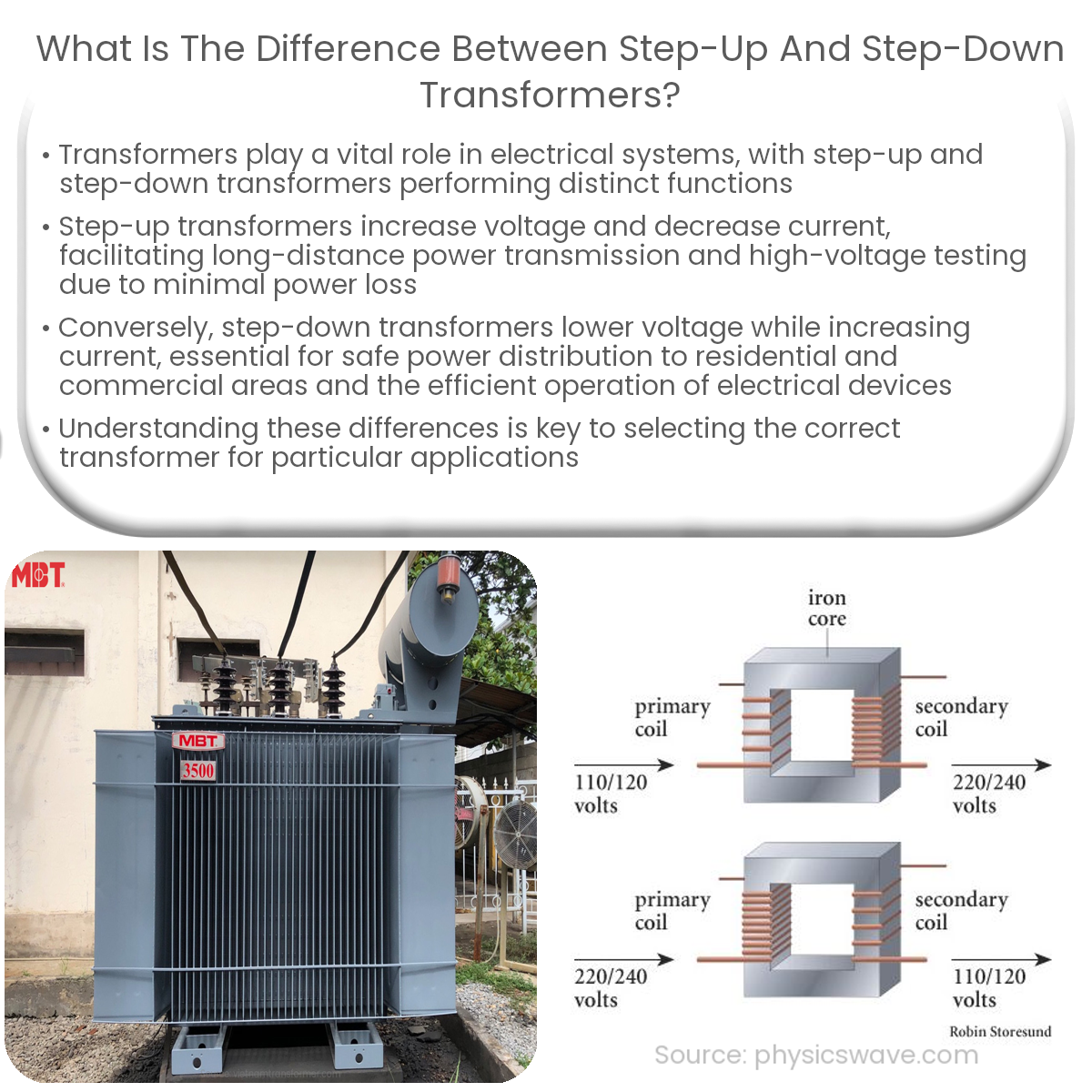Step-up transformers increase voltage and decrease current, while step-down transformers decrease voltage and increase current in a circuit.
Step-Up and Step-Down Transformers
Transformers are electrical devices that transfer energy between circuits without making direct electrical connections. They achieve this by employing electromagnetic induction to change voltage levels. In this article, we will discuss the differences between step-up and step-down transformers.
Step-Up Transformers
Step-up transformers are used to increase voltage levels from the primary side (input) to the secondary side (output). This increase in voltage comes at the expense of current, as the output current decreases. Step-up transformers are widely used in power transmission and distribution systems, where they boost voltage levels for efficient long-distance power transmission.
Step-Down Transformers
Step-down transformers, on the other hand, decrease voltage levels from the primary side to the secondary side. Consequently, the output current increases. Step-down transformers are commonly found in consumer electronics, power supplies, and electrical substations, where they lower high transmission voltages to safer levels for residential and industrial use.
Key Differences
- Voltage and Current: Step-up transformers increase voltage while decreasing current, whereas step-down transformers decrease voltage while increasing current.
- Applications: Step-up transformers are used for long-distance power transmission, while step-down transformers are used to provide lower voltage levels for residential and industrial use.
- Coil Arrangement: In step-up transformers, the primary coil has fewer turns than the secondary coil. Conversely, in step-down transformers, the primary coil has more turns than the secondary coil.
Conservation of Power
It is essential to note that transformers follow the conservation of power principle. The power input to the transformer is equal to the power output, barring minimal losses due to heat and other factors. Mathematically, this can be expressed as:
Pinput = Poutput
where Pinput is the power input to the transformer, and Poutput is the power output.
In conclusion, the primary difference between step-up and step-down transformers lies in their voltage and current transformation properties. Step-up transformers increase voltage and decrease current, while step-down transformers decrease voltage and increase current. Both types play crucial roles in power transmission and various applications.


